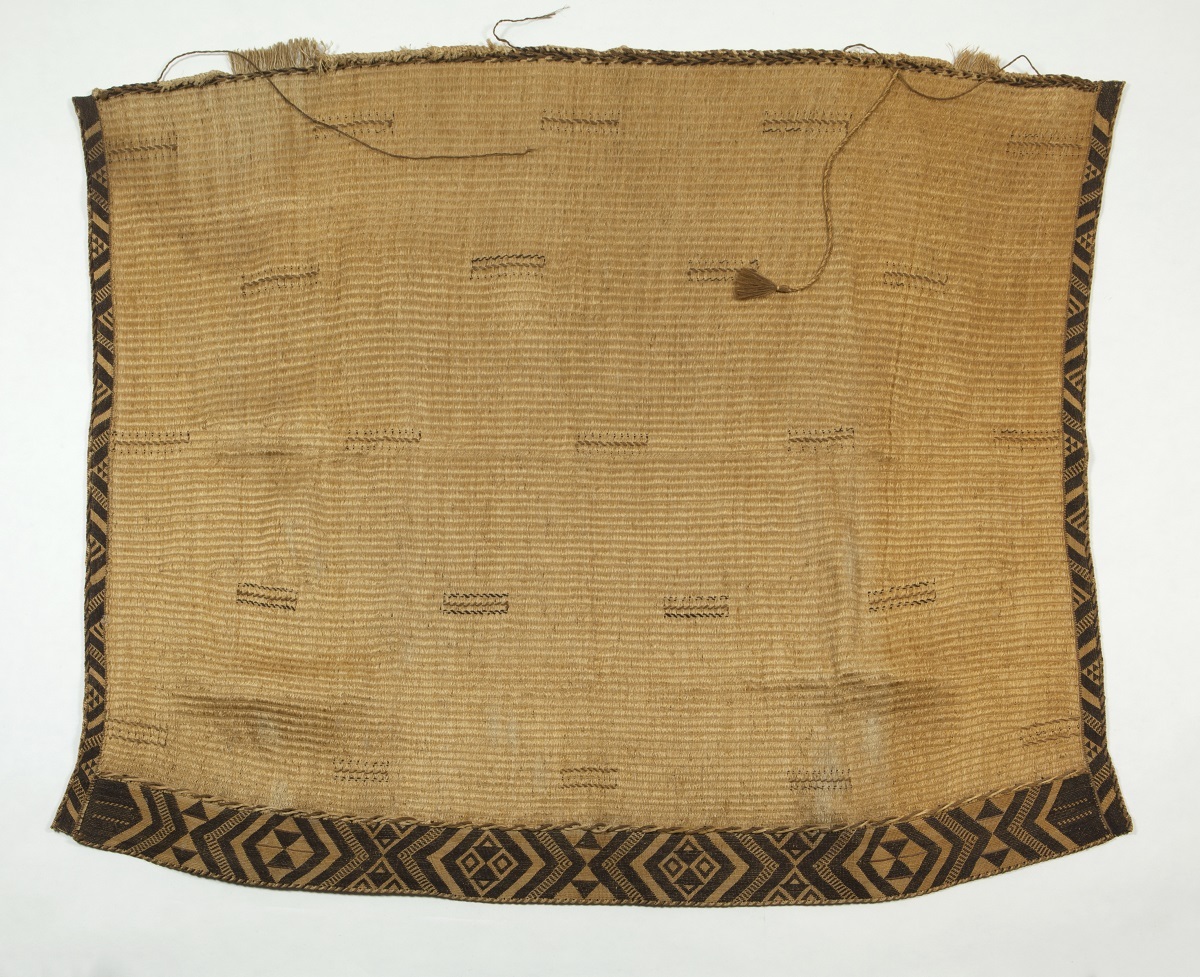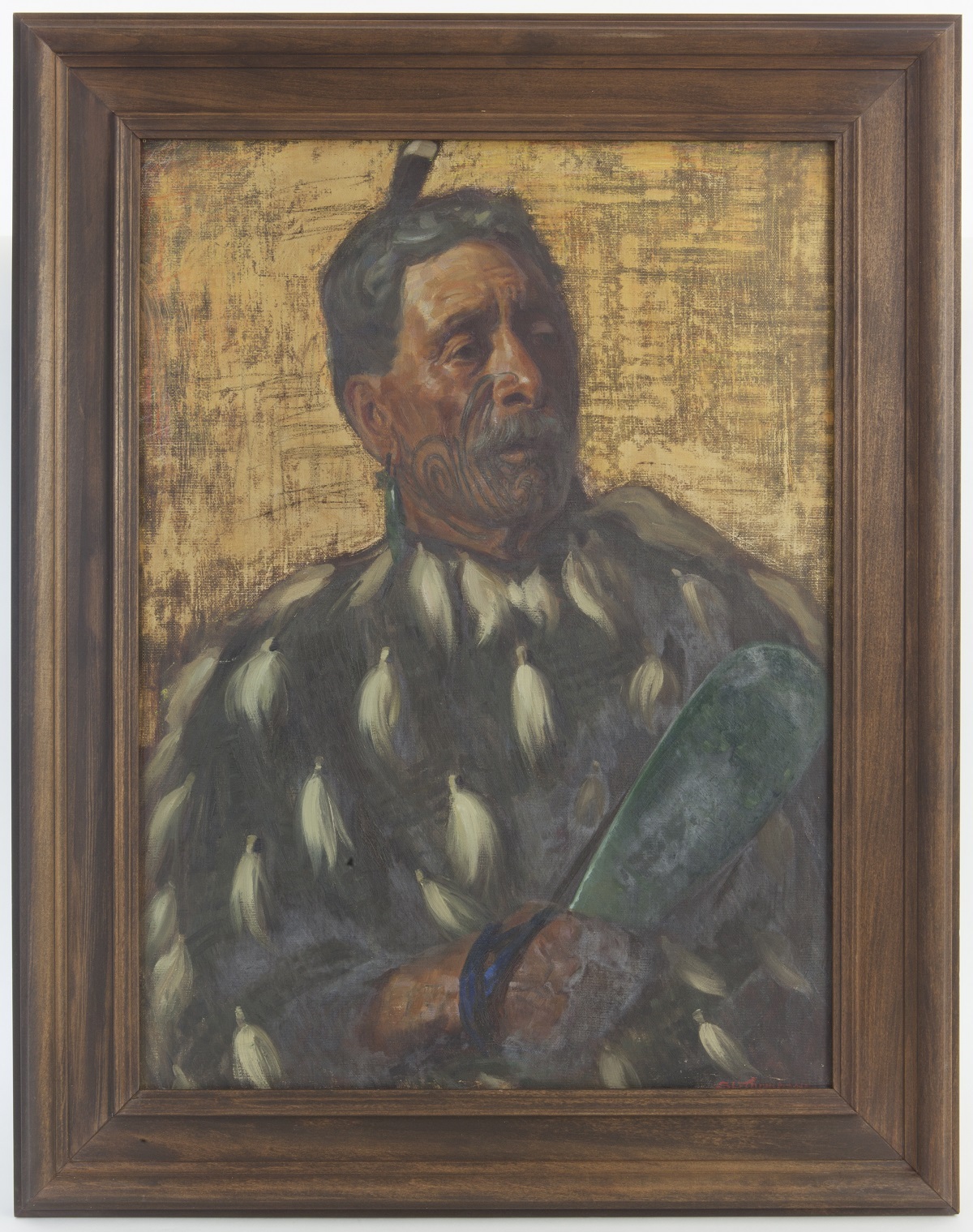In the late 1960s, Canterbury artist Sydney Lough Thompson gifted his private collection of taonga Māori and Pacific objects to Canterbury Museum. Among these gifts is an exquisitely woven kaitaka (fine flax cloak) with an intricate tāniko border.

The kaitaka was gifted to Thompson by people from Ngāti Tūwharetoa iwi in acknowledgement of his work in Tokaanu, on Lake Taupō. Between 1906 and 1910, Thompson spent his summers painting portraits of Māori. Thompson became friends with the Te Heuheu family and found sitters through this friendship. Returning each summer, he became well known to local iwi and was known as Tamehana, a transliteration of Thompson. Apparently, he refused payment for his paintings and so local iwi honoured him with gifts. In addition to the kaitaka, these included several other kākahu (cloaks), a carved canoe bailer and a whalebone patu.
Thompson was born in 1877, in Oxford, Canterbury, and after studying at Canterbury College School of Art, he headed overseas. In France, he spent time at the artists’ colony at Concarneau in Brittany, a place that would later become his home and a regular subject of his paintings. Thompson and his family travelled between New Zealand and France and the kaitaka travelled with them. In a painting from 1929, around 20 years after he was gifted the kaitaka, it can be seen in one of his paintings. In my studio at Kerizett, Concarneau, Annette, Yan and Mary (1929) shows his children at home in Concarneau. The tāniko-bordered kaitaka can be seen in the corner of the painting above the piano, draped over a framed painting.

Ngāi Tahu master weaver Ranui Ngarimu describes this kaitaka as a “stunning piece of work…[with] exquisite tāniko… A chiefly garment”. The aho (weft) is very fine, precise and consistent, indicating a very skilled weaver. The whenu tāpuri (finished edges) are also beautifully and tidily woven. Tellingly, there are paint stains at the edges of the cloak, alluding to that 1929 painting of his children in Thompson’s studio.
Thompson continued to paint until his death: his last work was completed shortly before his 90th birthday. Very few of Thompson’s Māori portraits are known: one is part of Canterbury Museum’s collection; another, much earlier work can be found at Christchurch Art Gallery. It is likely that others remain in family collections and perhaps now reside in marae.

Thompson’s respect and admiration for the people he knew and painted is reflected in the care he took of the taonga that were gifted to him. In all, he and his wife Maude were gifted at least five kākahu—all of which travelled with them around the world. He chose to gift these taonga to Canterbury Museum before his death because he wanted them to remain in his home region and not be lost overseas.
This blog post is a summary of a paper published in 2017 in Records of the Canterbury Museum. You can read the full article here. Julie King's biography of Sydney Lough Thompson is available here.
The objects discussed in this paper are not currently on display in the Museum.





